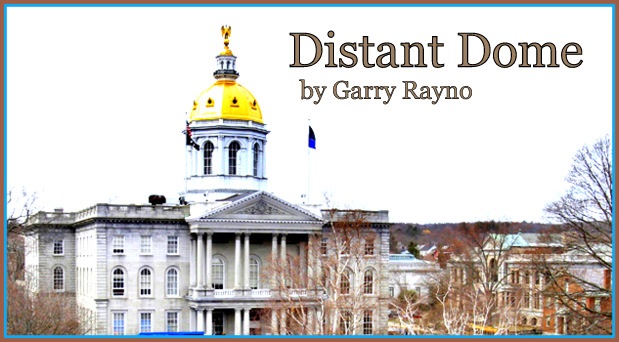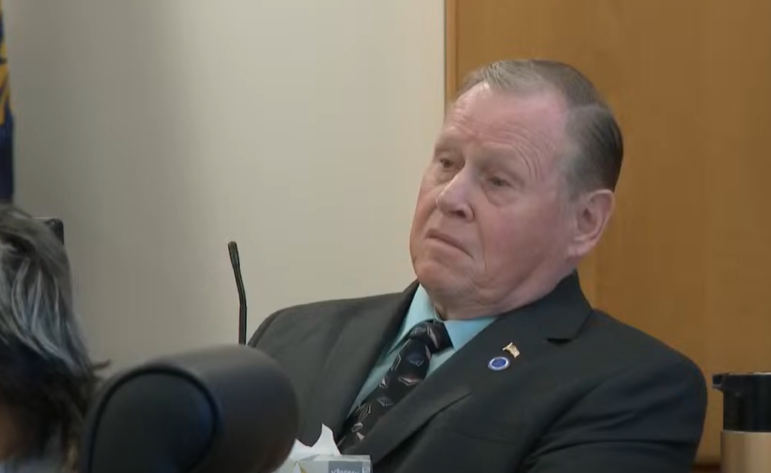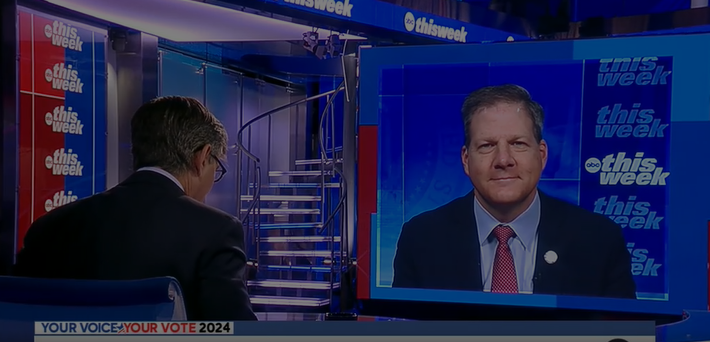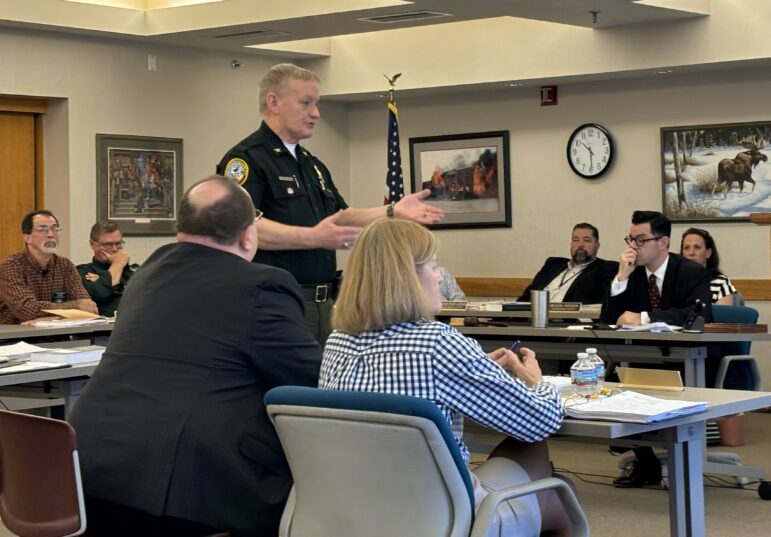Sign up for InDepthNH.org’s free Friday news roundup and Sunday weekender here.
By GARRY RAYNO, Distant Dome
For decades New Hampshire politicians have stood on political stumps from Pittsburg to Hinsdale to Seabrook trumpeting the righteousness of no new or increased taxes or fees.
Lawmakers’ last dance with multiple tax increases was dictated by the state Supreme Court’s Claremont II education ruling and before that when the bottom fell out of the state’s antiquated and non-elastic tax system during the 1989 recession.
The 1989 waltz was not enough and the state had to turn to the federal government for a multi-billion-dollar infusion of Mediscam money to right the state’s balance sheet.

Garry Rayno
Since that time, the political mantra has been no new taxes, fees or increases of any levy. These days the anthem has evolved to cutting tax rates, particularly for business taxes which are the lifeblood of the state’s cobbled-together tax system.
But this decades-long crusade has skirted the tax affecting most people, the property tax.
And it continues to bypass property taxes while several hundred million dollars of surplus revenue flows to one-time programs and the state’s rainy day fund with its current $100 million balance. At the same time, local property taxes continue their perpetual climb higher and higher.
State Passes Buck to Locals
State lawmakers have continued to downshift costs to local property taxes even during rosy economic times with robust revenue streams.
Much of the original downshifting occurred when state government faced prodigious budget deficits, but lawmakers have yet to restore any of the money to cities, towns, school districts or counties.
The downshifting means property owners are now responsible for costs the state once paid.
The most obvious example is the state retirement system.
The state traditionally paid 35 percent of the cost for municipal, school and county workers to encourage local government to participate in the state system. Some communities such as Manchester have their own pension system, but most do not.
The state’s contribution began to dwindle as the great recession took hold a decade ago and lawmakers reduced the state’s share to 30 percent in 2010, 25 percent in 2011, $3.5 million in 2012 and eliminated its obligation in 2013.
If the state had continued to pay 35 percent of the pension costs for municipalities and school districts in 2016, its contribution would have been $80 million, but it did not.
Pension costs for municipalities have grown from $88 million in 2003 to $381 million in 2015.
Some of the increase is due to the equity market free fall in the late 2000s, an actuarial method that allowed employers to pay very little for 20 years, and a special account used to fund cost-of-living increases and other benefits.
But pension costs for local property taxpayers would be considerably smaller if the state had continued to pay 35 percent of employer costs.
Similarly when the state overhauled its tax system under former Gov. Walter Peterson, 40 percent of the rooms and meals tax revenue was earmarked for cities and towns who gave up their stock and trade tax receipts.
The state kept progressively more and more of the room and meals revenue to the point where cities and towns were receiving less than 25 percent.
That changed in the 1990s when State Sen. John King of Manchester managed to convince his fellow lawmakers to return a percentage of year-over-year increases in rooms and meals revenue to cities and towns. Over time the state and municipalities’ shares began to approach the originally envisioned 60-40 split.
However lawmakers suspended the program due to the economic upheaval of 2009 and before long cities’ and towns’ share was close to 25 percent again.
Although the program has been reinstated, between 2010 and 2017 cities and towns lost about $58 million, according to the NH Municipal Association.
Also in 2009, revenue sharing which once provided cities and towns $50 million annually but was cut in half to help pay for state education aid after the Claremont II ruling, was suspended as well.
The program has yet to be restored costing cities and towns $200 million.
Waste water projects wait
Lawmakers have also reduced Department of Environmental Services grants particularly for wastewater treatment projects to the point where 50 projects totalling $90 million are waiting in the pipeline.
State education aid programs have also been shifted to local property taxes to help balance the state budget.
During the recession a decade ago, the school building aid program was suspended. No new projects were approved while the state pays its prior obligations. At one time the program paid up to 60 percent of building costs for regional or cooperative school districts.
Today the program is capped at $50 million a year which allows for few if any new projects.
Currently there are more than 70 school building projects worth more than $650 million in the pipeline and the number is growing.
When the school funding formula was overhauled in 2011, some school districts would have lost millions of dollars in state aid. The architects of the change instituted hold-harmless grants that meant no school district received less money than it did the prior year.
The grants were set for that one year but were to continue into eternity so the changes would not create major problems for the affected school districts.
However state aid was capped at 5 and then 8 percent for fast growing school districts who sued two years ago claiming it unconstitutional. They said it was unfair because school districts continued to receive the hold harmless grants although many schools’ enrollments were decreasing while they were barred from receiving what they were legally owed for state aid because of the cap.
Eventually lawmakers agreed to begin eliminating the hold harmless grants over time which increases local property taxes over time as they have to cover more and more of school costs.
Poor districts hurt worse
The loss in state aid would be substantially worse for rural, property-poor districts.
An attempt to repeal the repeal was killed in the House this session.
If the school voucher bill currently before the House Finance Committee is approved, there will be significantly more downshifting of education costs to local property taxes.
Senate Bill 193 or as supporters call it the ‘freedom scholarships” bill, was approved last year by the Senate on a party line vote with Republicans in favor and Democrats opposed.
The House Education Committee worked on the bill over the summer and fall and a new version was initially approved by the House earlier this year nearly down party lines.
In its most recent version, the Finance Committee restricted who would be eligible for a scholarship at a private school or home schooling, to parents at 185 percent of the federal poverty level or below.
Under the bill, the parents would receive a state grant of 95 percent of the basic student grant of $3,600.
The other major change is what would happen to districts that lost students.
Under the bill, a stabilization fund would have reimbursed school districts losing more than .25 percent of their annual budget because of the scholarships.
Hearing Friday on ‘freedom scholarships’
But under the new version school districts would receive a one-time grant of $1,500 for every student that leaves. You can watch downshifting in action at the bill’s public hearing Friday at 1 p.m. in Rooms 210-211 of the Legislative Office Building.
That change would significantly reduce state aid to districts losing a fair number of students such as Manchester, Nashua and Concord where there are lots of options for parents to consider.
The scholarship program could also reduce the number of students on free and reduced lunches which also helps determine state aid for each district.
While budget writers look to trim the state’s costs for the program by downshifting costs, through the end of February, state revenues show a $40 million surplus with the big business tax revenue months of March and April coming up.
The state’s balance sheet does not appear to be in any danger of running a deficit, but you may not want to open your property tax bill when it comes due July 1 or at the end of this month if your pay property taxes quarterly.
So when you hear state office holders touting the no new or increased taxes mantra, know that sound bite does not include your property taxes.
Garry Rayno may be reached at garry.rayno@yahoo.com
Garry Rayno’s Distant Dome runs exclusively on Manchester Ink Link and InDepthNH.org, where Rayno will explore a broader perspective on State House – and state – happenings. Over his three-decade career Rayno has closely covered the NH State House for the New Hampshire Union Leader and Foster’s Daily Democrat, and his coverage spanned the news spectrum, from local planning, school and select boards, to national issues such as electric industry deregulation and Presidential primaries. He is former editor of The Hillsboro Messenger and Assistant Editor of The Argus-Champion. Rayno graduated from the University of New Hampshire with a BA in English Literature and lives with his wife Carolyn in New London.
